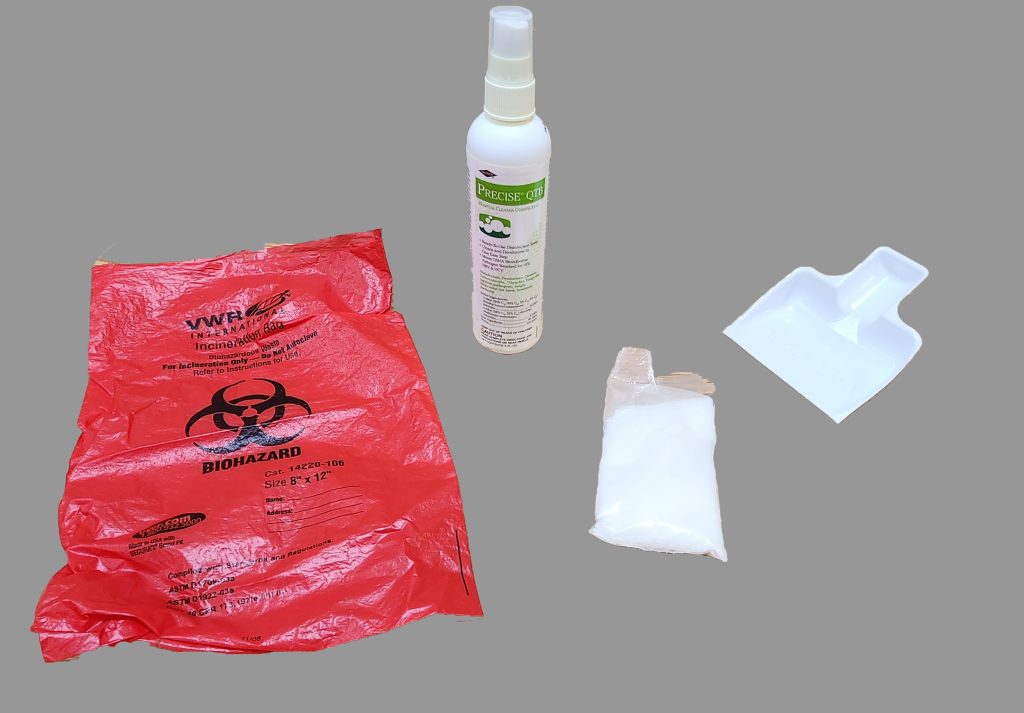Blood-borne pathogens are infectious microorganisms in blood and body fluids that can cause disease. These pathogens include, but are not limited to, hepatitis B (HBV), hepatitis C (HCV), and human immunodeficiency virus (HIV). Workers in many health-related occupations, including nursing assistants and other health care personnel, are at risk for exposure to blood-borne pathogens.
Needlesticks and other sharps-related injuries may expose workers to blood-borne pathogens. As a nursing assistant, your highest risk for blood-borne exposure is during shaving and any related disposal of the razor. Typically, residents use electric razors that have low risk of causing any open cuts, but you should always wear gloves when shaving a resident. Any disposable razor or objects that can cause a break in the skin, such as broken glass or needles, should be disposed of in a sharps container.[1] See Figure 4.15[2] for an image of a sharps container.

Health care employers must follow OSHA’s guidelines for handling blood called the “Blood-borne Pathogens Standard.” If you handle a spill of blood or body fluids, you should wear a face shield, gown, and gloves. You should receive training during your orientation at an agency on how to properly handle a blood spill and the PPE and cleaning solutions available. See Figure 4.16[3] for an image of a typical blood spill kit.

If you do experience an exposure to a patient’s blood or body fluids, follow agency policy and wash/flush the area and notify the nurse supervisor. Part of OSHA’s “Blood-borne Pathogens Standard” is to complete a postexposure assessment to determine if additional medical treatment is required. It is extremely important that this assessment occurs immediately after your exposure. The standard also requires your employer to offer the vaccine series for hepatitis B and hepatitis C at no cost to you if you have not previously received them.
To read more information on OSHA’s Blood-borne Pathogens Standard, visit OSHA’s FactSheet PDF.
- Occupational Safety and Health Administration. (n.d.). Bloodborne pathogens and needlestick prevention. United States Department of Labor. https://www.osha.gov/bloodborne-pathogens ↵
- "Sharps Container" by Landon Cerny is licensed under CC BY 4.0 ↵
- "Blood Spill Kit" by Landon Cerny is licensed under CC BY 4.0 ↵
Infectious microorganisms in blood and body fluids that can cause disease. These pathogens include, but are not limited to, hepatitis B (HBV), hepatitis C (HCV), and human immunodeficiency virus (HIV).
